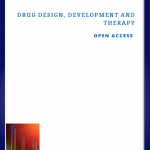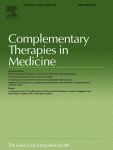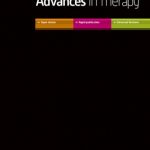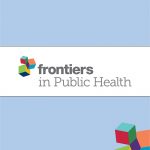HIMed, 1: 1, 2009
Interview to Peter Fisher
Homeopathy and Integrated Medicine

Interview to Peter Fisher for Homeopathy and Integrated Medicine HIMeD, journal of Homeopathic and integrated Medicine, Official organ of SIOMI printed in 3.500 copies and distributed via the Internet to 20.000 Italian readers, Physicians and Pharmacists, through the weekly magazine of homeopathy Omeopatia33 Elsevier Publisher.
Dr Fisher, You are among the best known homeopathic doctors in the world and everybody knows about your Hospital located in the centre of London, the Royal London Homeopathic Hospital, could you tell us how, when and why did you choose to become an homeopath?
First of all I must update you: the Royal London Homoeopathic Hospital changed its name to the Royal London Hospital for Integrated Medicine on 16 September 2010. The change is to reflect better what we do to patents and their doctors. We provide more homeopathy than any other therapy, and will continue to do so, but we also offer many other complementary therapies including acupuncture, herbal medicine, nutritional medicine and various psychological techniques, all integrated within the National Health Service and at a leading academic medical centre, University College London Hospitals.
I first became interested in complementary medicine while still a medical student at Cambridge University. In 1972 I visited China, this was a very interesting period in China, it was towards the end of the Cultural Revolution, a few months after Nixon’s visit, very few westerners had been to China since 1967. Mao Zedong was still alive and the ‘Gang of Four’ at the height of their power and Chinese Traditional Medicine was being strongly promoted. I remember the moment the ‘scales fell from my eyes’ (note this is a biblical phrase: ‘The scales fell’ from St Paul’s eyes on the road to Damascus – I am sure you know the Italian version of this!) ’ when I was in the operating theatre of a hospital in a small provonicial town, and saw a woman having a gastrectomy, with her abdomen open, conscious, talking to the anaesthetist, with 3 needles in her left ear attached to an electrical box! I thought ‘ that doesn’t happen, they didn’t teach us that at Cambridge! ’.
A little later, while still a medical student, I was ill myself pharmacieinde.com. I was extensively investigated by distinguished professors at my medical school. They made a precise diagnosis then said, sorry, nothing can be done. A friend suggested I try homeopathy, one of the first thing that happened was a severe aggravation! But that at least convinced me it did something, and eventually it cured the problem. Later, when I was a junior doctor, I worked at the Royal London Homoeopathic Hospital for 18 months before completing my training in internal medicine and rheumatology and returning to the hospital as a consultant in 1986.
If I am not wrong, you are an acupuncture doctor as well; what has pushed you to study two complementary medicines?
No I do not practice acupuncture myself, although I have close colleagues who do. Practising homeopathy, keeping up to date with conventional rheumatology, running a hospital and editing an international journal is enough for me!
In your opinion, what is the worst defection of traditional (conventional) Medicine today? And the worst one connected to Homeopathy today?
The biggest problem in conventional medicine is the pandemic of iatrogenesis, this is linked to the pandemic of long term conditions, now the major cause of death in all countries. People with long term conditions take more drugs and suffer more side effects.
The biggest problem in homeopathy is the rise of so-called ‘new’ schools of homeopathy which substitute metaphor, symbolism and the doctrine of signatures for similarity. Homeopathy is based on pathophysiological similarity. The properties of a medicine cannot be predicted from its position on the periodic table, or its botanical or zoological classification, nor its symbolism. Hahnemann was very clear on this point and strongly critical of such doctrines.
We know that among your patients there are famous people like the Queen of England, so is Homeopathy so deeply rooted in the English Health tradition, and if so, why?
I have been physician to Her Majesty The Queen since 2001, there is a tradition of royal homeopathic physicians dating to the middle of the 19th century. Homeopathy is not as popular in the UK as in France or Germany, this is partly due to the fact that the system in France and Germany is more responsive to patient demand. Recently there has been a series of attacks on homeopathy from a scientistic group who claim there is no evidence to support it an dthat it should not be provided in the National Health Service.
How long have you been working at Royal London Homeopathic Hospital?
I first worked there in 1977-8, then part time in 1983-6 and full time since 1986.
What services referred to complementary Medicine does the Hospital distribute?
We offer the following services: Antenatal, Autogenic training, Children’s, Chronic Fatigue Syndrome, Cognitive Behavioural Therapy, Complementary cancer care, Facial pain, Fibromyalgia, General medicine, Group acupuncture, Herbal medicine, Irritable Bowel Syndrome, Insomnia, Musculoskeletal, Medical hypnosis, Rheumatology, Podiatry & chiropody, Stress & mood disorder, Skin, Women’s, Weight loss. With a few exceptions clinics are organised in terms of conditions (cancer, skin etc) or of patients (women, children), each staffed by specialist doctors and offering a range of treatments including homeopathy, acupuncture, psychological interventions, nutrtitional and herbal treatments, likely to be helpful to the problems encountered.
What relationships do you have with doctors working in the British public service? And what about the other Hospitals?
The Royal London Hospital for Integrated Medicine is part of University College London Hospitals one of the UK’s leading academic medical centres. We genrally have good relationships with colleagues and offer many integrated services in collaboration with appropariate colleagues. For instance our antenatal service is in collaboration with the Elizabeth Garret Anderson Hospital, University College London Hospital’s women’s and children’s unit, the facial pain service is integrated with the Eastman Dental Hospital. Most of the patients are referred to the Complementary cancer care by UCLH oncologists.
What’s the structure like and how many people work in the team at RLHH and how is the Health Assistance Service organized?
We are an NHS hospital patients are referred by their General Practitoners as to any secondary care facility.
We know that at RLHH there is a Pharmacy operating inside the Hospital, how is the Service organized?
It dispenses homeopathic medicines, nutritional products and herbal medicines on the usual NHS terms, which means a fixed charge per item (approx 8 Euros), not related to is cost. Children, retired people, the unemployed etc pay nothing. It also has a retail department which sells direct to the public.
Could you tell us briefly the story about RLHH?
The Royal London Hospital for Integrated Medicine was founded as the London Homoeopathic Hospital by Dr Frederick Foster Hervey Quin in 1849. He was among the first doctors to practice homeopathy in Britain, and studied with Hahnemann. Quin was a prominent figure in London society and very well connected, having been physician to Queen Victoria’s father-in-law Prince Leopold, father of Prince Albert and a friend of Charles Dickens.
The hospital’s first great success came in the Broad Street pump cholera epidemic of 1854. The London Homoeopathic Hospital was the closest hospital to the pumps and achieved remarkable success in treating the victims of the epidemic. The Hospital’s mortality rate was 16%, compared to 53% at the nearby Middlesex Hospital.
Many well-known homeopathic physicians were associated with the RLHH in the 19th and 20th centuries, including Robert Ellis Dudgeon, John Henry Clarke, James Compton Burnett, Edward Bach, Charles E Wheeler, James Kenyon, Margaret Tyler, Douglas Borland, Sir John Weir, Donald Foubister, Margery Blackie and Ralph Twentyman among others. We also welcomed refugees from Nazi persecution onto our staff notably Drs Otto Leeser and Eric Ledermann. During the 1950's and 60's the RLHH's influence spread internationally, through young overseas doctors who attended the Hospital for clinical attachments. These included Dr Diwan Harish Chand, homeopathic physician to the President of India and the influential Argentine homoeopath Dr Francisco Eizyaga.
The hospital became ‘Royal’ by consent of King George VI in 1947. In 1948 it became part of the new National Health Service.
On 18 June 1972 the RLHH suffered a devastating blow in an aircrash. Sixteen of the Hospital's doctors were killed. They had been on their way to the International Homoeopathic League Congress in Brussels.
In 1981, the operating theatres and surgical beds were closed. The hospital responded by developing and diversifying its complementary medicine services. It became the largest centre for homeopathic medicine in any industrialised country and began to develop other types of complementary medicine. From the late 1950’s Dr Ralph Twentyman introduced Iscador and other complementary therapies for cancer, in what was to become the NHS’s first complementary cancer service. Dr Anthony Campbell established the NHS’ first acupuncture clinic in 1977 and Dr Michael Jenkins developed allergy and environmental medicine.
From 2002 to 2005 the RLHH underwent a comprehensive £20m redevelopment, transforming it into a state-of-the-art treatment and research facility in homeopathic and complementary therapies, it was formally reopened by HRH The Prince of Wales on 12 October 2005.
In 2006-2008 there was a sustained media attack on complementary medicine in the NHS. This met with strong public and political support for NHS homeopathic hospitals. Again the RLHH responded with:
– the NHS’s first herbal medicine service
– group acupuncture clinics allowing acupuncture for common painful conditions to be delivered cost-effectively
– the UK’s first course in integrated complementary medicine
– NHS Evidence – complementary and alternative medicine, the UK National Institute for Health and Clinical Excellence’s (NICE) evidence website (http://www.library.nhs.uk/cam)
– The Complementary and Alternative Library and Information Service (CAMLIS): www.cam.nhs.uk/
In November 2007 the senior clinical and management staff unanimously decided that the time was right to change the name of the hospital to the Royal London Hospital for Integrated Medicine in order more accurately to reflect the nature of its work. The renaming became official on 16 September 2010.
Who pays to be checked at RLHH? In what way the National British Health System, NHS, is involved? What is the amount to be charged on the citizen for his/her checks? And do all citizens pay equally, independently upon their income ?
There is no charge for investigation and treatment for patients who are referred by their family doctors. However some of the local health funds forbid doctors from referring. We also see private patients.
How many patients arrive at RLHH every year in the average? How many are involved in pediatric age, and how many come from outside London?
We have about 27,000 outptaient appointnents per year, approximately 70% of patients are from London or near London, about 20% are children.
What is the major demand for the health from British citizens at RLHH, and jet, what are the most treated diseases at RLHH ?
See our services above.
We can take advantage from the magazine Homeopathy (formerly British Homeopathic journal) in all the world. Tell as when it was founded; is it true that it has recently received further acknowledgements for its scientific activity, getting an increase IF?
Homeopathy is published by Elsevier, it will be 100 years old in 2011! It is the only journal dedicated to homeopathy indexed by Pubmed, it has recently received its second annual impact factor: 1.125. The website is here .
Where does Homeopathy take its money from?
It is published by Elsevier and is the official organ of the Faculty of Homeopathy. It is paid for by subscriptions.
On initiative of Edward Calabrese, the major scientist in reference to the phenomenon of Ormesis, an international debate as recently appeared on BELLE News Letter where our SIOMI President has taken part too; and what about you, what do you think about the similarity between homeopathic Simile Principle and Ormesis about the possible mechanism of action of molecular concentrations of homeopathic drugs, a theme, as you know, which SIOMI has been concentrating research in Italy?
I also contributed to this debate. It is a very interesting area, and emphasises as I pointed out before that homeopathy is based on pathophysiological similarity, not symbolism or metaphor. The work of Wiegant on similitude and hormesis is very interesting in this respect. The main issue is the question of ultramolecular dilutions. Homeopathy has recently published a special issue on biological models which is available free of charge on our website.
We know that you are an expert of the Scientific Board of Integrated Medicine in the Hospital of Pitigliano. How do you judge your experience as a consultant of Tuscany Region and what do you think about the hospital project related to Integrated Medicine?
I was impressed by the work of the Tuscan regional government. I hope the Royal London Hospital for Integrated Medicine and the Pitigliano hospital will have a close fraternal relationship.
In Italy Homeopathy is recognized as a Medical act, therefore people who aren’t Doctors (as Naturopaths) according to the law, are not allowed to prescribe homeopathic drugs. What is Naturopaths professional situation like in the UK now? What type of school do they have to attend? Can they prescribe homeopathic drugs as well? What is the relationship between Naturopaths and Homeopaths? Don’t you think we are running the risk of a roles confusion?
In the UK there is no requirement to be legally registered in order to practice homeopathy (or acupuncture, herbal medicine, nutrition etc), although osteopaths and chiropractors are registered. There is no control over their training and no official register for these groups. This does indeed create a difficult and unsatisfactory situation. There is a legal proposal to register acupuncturists who are not members of health professions, herbalists and traditional Chinese Medicine practitioners. This has encountered opposition from some people who claim it would legitimize unscientific practice.
Finally, could Italian Homeopaths attend an internship at the RLHH? Where should they apply for it?
Yes this is possible, although our capacity is limited. Italian doctors interested in internships should contact our Director of Education Dr Sara Eames .
Fonte: Tiziana Di Giampietro MD, Pediatrician, SIOMI Councelor







